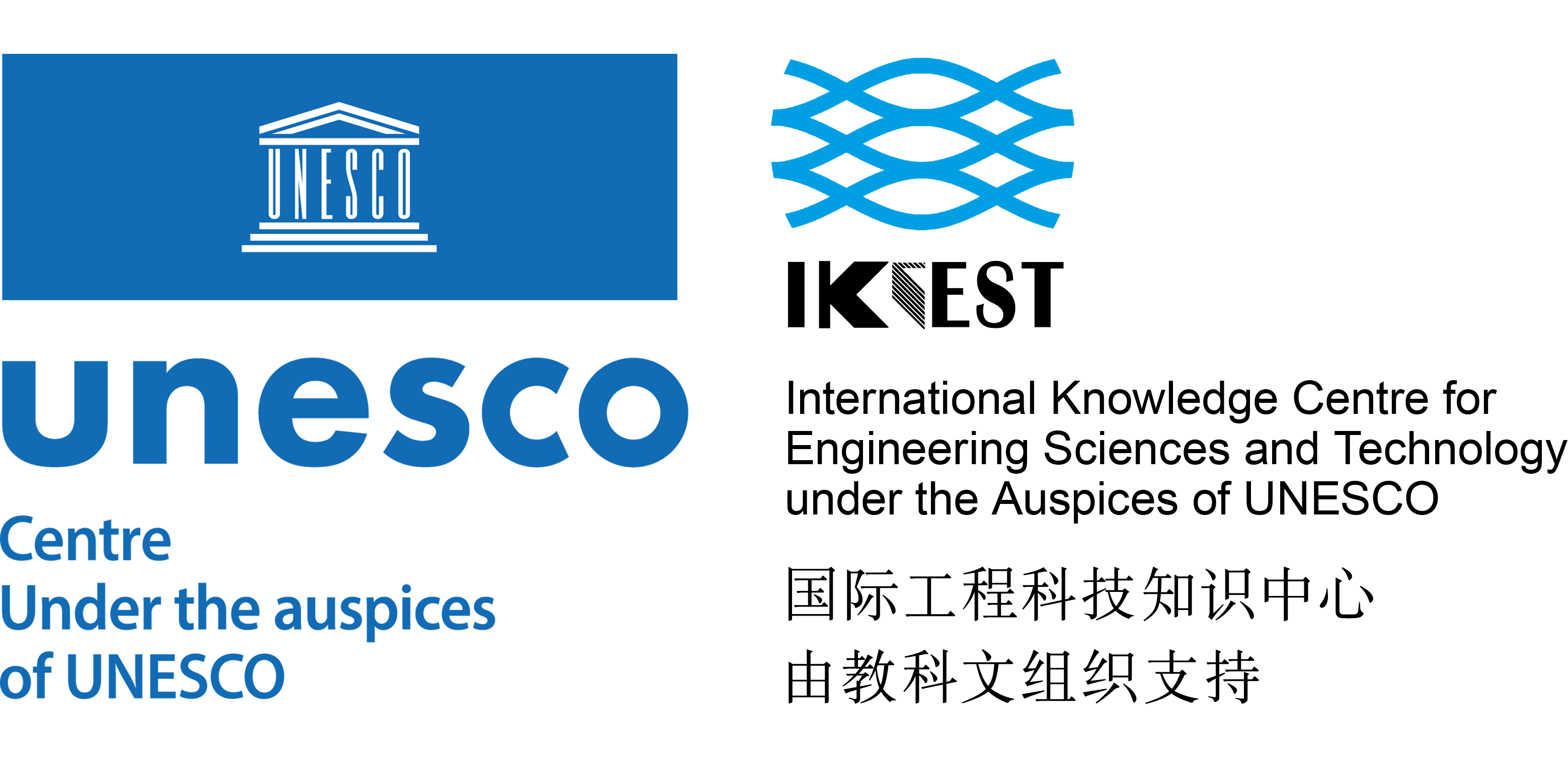Journal
Please choose volume & issue:
-
Manipulating cavitation by a wall jet: Experiments on a 2D hydrofoil
Abstracts:We report on the experimental investigation of cavitating flow control over a 2D model of guide vanes of a Francis turbine by means of a continuous tangential injection of liquid along the foil surface. The generated wall jet, providing supplementary mass and momentum, issues from a nozzle chamber inside the hydrofoil through a spanwise slot channel on its upper surface. High-speed imaging was used to distinguish cavity flow regimes, study the spatial patterns and time dynamics of partial cavities, as well as to evaluate the characteristic integral parameters of cavitation. Time-resolved LIF visualization of the jet discharging from the nozzle was employed to check if the generated wall jet is stable and spanwise uniform. Hydroacoustic measurements were performed by a hydrophone to estimate how the amplitudes and frequencies of pressure pulsations associated with cavity oscillations change with the injection rate. A PIV technique was utilized to measure the mean velocity, its fluctuations and the dominant turbulent shear stress component, which were all compared for different flow conditions and with the results for the unmodified (standard) foil. The effect of injection rate on cavitation and flow dynamics was examined for three attack angles, 0, 3 and 9°, and a range of cavitation numbers corresponding to different regimes. The low-speed injection was shown to lead to an intensification of turbulent fluctuations in the boundary layer and shrinking of the attached cavity length by up to 25% compared to the case without injection. The injection with a high velocity, in turn, causes a rise of the local flow velocity and a reduction of turbulent fluctuations near the wall, which, consequently, increases the foil hydrodynamic quality at a relatively low energy consumption for generation of the wall jet. However, in this case the vapor cavity becomes longer. Thus, the low-speed injection turns out to be effective to mitigate cavitation but the injection at a high velocity is more preferable from the standpoint of the flow hydrodynamics. In the whole, the implemented control method showed to be quite an efficient tool to manipulate cavitation and hydrodynamic structure of the flow and, thereby, under certain conditions, to suppress the cavitation-caused instabilities.
-
Dynamical feature of particle dunes in Newtonian and shear-thinning flows: Relevance to hole-cleaning in pipe and annulus
Abstracts:Cuttings transport under laminar and turbulent liquid flow in horizontal and deviated pipes were investigated. Several experiments were conducted both for single-phase liquid flow and liquid-particle flow in order to study the impact of rotation of a drill string, as well as fluid rheology and particle size on dynamic feature of particle dunes. Long time series of pressure gradients and flow patterns of the liquid-particle flow were obtained for off-line analysis. Fast Fourier Transform (FFT) was the methodology used to study the time series of pressure gradient signals. The time series were recorded as long continuous experimental sequences, while the flow conditions were changed in time stamped steps. The off-line analysis could then be carried out on each sequence which was easily extracted from the original based on the time intervals. The analysis indicated an existence of dominant frequencies corresponding to liquid and particle dynamics, and to the rotational speed of the drill string. It was found that the distribution and width of the frequency spectrum can be used as an indicator of the particle concentration at given flow conditions. Particle size has a large impact on the frequency spectrum, mostly when the drill string is rotating. The results of this study could help in real time prediction of downhole conditions in petroleum geology, exploration, and drilling operations.
-
A new approach to characterize the performance of heavy oil recovery due to various gas injection
Abstracts:The performance of CO
2 injection into a semi-heavy oil reservoir was investigated at reservoir conditions, using highly permeable sandstone in a complete series of PVT tests and coreflooding experiments. Analysis of involved parameters such as: injection rate, injectant type and reservoir pressure were also considered. Oil viscosity reduction and oil swelling are the most influential mechanisms of enhanced oil recovery in this process. The results demonstrated that CO2 injection would decrease the interfacial tension for the high permeable medium in the absence of capillarity, but this reduction may not improve the recovery drastically. One of the main important aspects of this work is the introduction of a new empirical combined dimensionless group (dissolution number, Ndis ) that helps prediction of oil recovery in any other heavy oil reservoir with high permeability of porous media. In this case, a more precise analysis could be performed by applying the dissolution number instead of capillary and/or Bond number. -
A computational analysis of local flow for reacting Diesel sprays by means of an Eulerian CFD model
Abstracts:An implementation and validation of the coupled Σ-Y ADF model is presented in this work for reacting Diesel spray CFD simulations under a RANS turbulence modeling approach. An Approximated Diffusion Flamelet (ADF) model Michel et al. (2008) implemented in the OpenFOAM CFD open-source library by Winklinger (2014) is fed with the spray description, i.e. mixing formation process, provided by the Σ-Y Eulerian atomization model Garcia-Oliver et al. (2013). In the present investigation, the Engine Combustion Network Spray A reference configuration is used for validation. Specifically, the model can provide accurate predictions of typical reacting spray metrics, such as the ignition delay and the lift-off length. Moreover, the internal structure is also fairly reproduced in terms of quasi-steady spatial distribution of formaldehyde and OH, related with low and high temperature reactions respectively. Additionally, modeling results have been compared to recent Particle image velocimetry (PIV) measurements Garcia-Oliver et al. (2017) under both inert and reacting conditions. Flow response to heat release is quantitatively predicted by the model, both in terms of local velocity increase as well as radial dilation. The model has been used to understand combustion-induced reduction in entrainment, in particular around the lift-off length location. Flow confinement does not seem to influence the global flame behaviour, even though some changes in the local flow hint can be observed when moving from an open to a closed domain.
-
A numerical model for the performance assessment of hydrophobic meshes used for oil spill recovery
Abstracts:Accidental oil spills in the ocean have a big impact on aquatic environments and human activities, and one of the most promising clean-up techniques is the use of hydrophobic and oleophilic meshes. It is important to understand the underlying physics of these meshes and their behavior under different conditions. Here, a mesh is conceptualized as an equivalent porous medium where the oil recovery and water breakthrough depend on the fluid column height and material properties. A model of two-phase flow through the mesh was implemented in COMSOL Multiphysics®. Hydrophobicity, contact angles and surface tension effects are considered through a capillary retention curve, while flow properties are represented by permeability functions. The model was verified and tested with existing experimental data. It constitutes a powerful tool for future research and optimization of environmental solutions based on hydrophobic and oleophilic meshes.
-
Euler–Euler multiphase CFD-simulation with full Reynolds stress model and anisotropic bubble-induced turbulence
Abstracts:In the present work, Euler–Euler modeling of bubbly flows is combined with a full Reynolds stress model for the turbulence in the liquid carrier phase. Reynolds stress models have only rarely been explored in this context, although effects requiring this level of description are frequently encountered in industrial applications towards which the Euler–Euler approach is geared. In particular, source terms describing the additional bubble-induced contribution to the liquid phase turbulence with proper account for its anisotropy have not firmly been established yet. A formulation based on the direction of bubble motion relative to the liquid is given here. Two well-known variants of Reynolds stress models due to Launder, Reece and Rodi and Speziale, Sarkar and Gatski are compared. Closure relations for the bubble forces are applied that have been shown previously to work well over a range of conditions. The model is validated by comparison with a set of pipe flow data that contains variations of liquid and gas flow rates as well as different pipe diameters. An important criterion for the selection of the data was to provide measurements of individual components of the Reynolds stress tensor.
-
A deterministic and viable coalescence model for Euler–Lagrange simulations of turbulent microbubble-laden flows
Abstracts:The topic of the paper is the development of an enhanced film drainage model for the prediction of bubble coalescence in the context of the Euler–Lagrange approach relying on large-eddy simulations. The starting point is the coalescence model by Jeelani and Hartland (1991), which compared to other often used models has several benefits: (1) A temporally evolving contact surface is considered avoiding the strong simplification of a constant contact area. (2) For contaminated bubbles an initially inertia-dominated process followed by a viscous-controlled regime are distinguished. (3) The contact time of the bubbles results as a side product of the modeling assumptions and thus is consistent with the film drainage concept. The main reason why this improved coalescence model was not applied in the past is the specific circumstance that the implicit equation for the determination of the transition time between the two phases (inertial and viscous) cannot be determined analytically. This problem is eliminated in the present study by numerically solving this equation. However, to avoid a time-consuming procedure for each individual bubble collision, a regression function is set up for a pre-defined range of bubble diameters and relative collision velocities. This renders the coalescence model feasible for flows with a huge number of bubbles. In a first step, the new coalescence model is validated against the experiments of single bubble coalescence with a free surface by Zawala and Malysa (2011) and Kosior et al. (2014). For the different cases considered the coalescence model yields reasonable agreement with the experiments. Furthermore, it is demonstrated that the results are improved compared to more popular but simpler models available in the literature. Afterwards, the coalescence model is applied to four-way coupled Euler–Lagrange simulations of a bubble column with clean and contaminated bubbles considering two different sizes. Significant deviations are found between the different cases, which can be traced back to varying collision frequencies and the different coalescence mechanisms in effect. Thus, it is shown that on the one hand the enhanced coalescence model leads to reasonable results and on the other hand is highly efficient allowing to take a huge number of bubble collisions deterministically into account.
-
Acoustic modeling of the singing vortex and its sound signatures
Abstracts:The “singing vortex” is a special phenomenon generated from a cavitating vortex trailing from the tip of an elliptical hydrofoil under certain conditions. In this paper, the special phenomenon was successfully reproduced similarly to that from
Maines and Arndt (1997) . The “singing vortex” presents a periodical characteristic in the time domain and a standing wave pattern in the spatial domain, while multiple distinct peaks show up in the sound spectrum. An acoustic model aiming to demonstrate the sound signatures of the singing vortex was proposed. The theoretical model provided a reasonable estimation of the sound radiation intensity compared to the experimental data. The relationship between the “singing” frequency and flow parameters was also investigated attempting to explain the mechanism of the singing vortex. -
A multiscale DEM-VOF method for the simulation of three-phase flows
Abstracts:A novel multiscale approach for three-phase flows is presented. The goal of the proposed method is to solve arbitrary three-phase flow configurations in a computationally efficient way, and in particular taking into account the effects of different length scales while sharply reducing the computational burden. This is particularly important in chemical, environmental, and process engineering, where large-scale quantities are normally of interest, but small-scale dynamics cannot be neglected. The method is based on the definition of two different length scales: the bulk scale, and the fluid fine scale. A dual-grid approach is adopted in order to resolve the bulk scale with information from the fluid fine scale. It is shown that the described method succeeds in delivering more accuracy than a standard approach based on the volume averaging technique, still, it remains suitable for the solution of real interest problems. The method is shown to successfully satisfy experimental results presented in the literature. Examples of three-phase flows simulations are provided to show how the proposed numerical approach can describe the physics of particle-laden, free surface flows with competitive computational cost. It is shown how the proposed method can naturally extend the DEM-VOF method to the presence of complex interface dynamics.
-
Experimental investigation of asphaltene adsorption in porous media due to solvent injection and effects on relative permeability
Abstracts:While reduction in rock permeability due to deposition of asphaltene fraction of crude oil imposes negative effects on oil production rate from producing formation, there is no clear understanding about adsorption of asphaltene and the resulting effects on rock-fluid properties such as relative permeability.
Hot Journals
- Risk Breakdown Matrix for Risk-Based Inspection of Transportation Infrastructure Projects
- Social Control in Outsourced Architectural and Engineering Design Consulting Projects: Behavioral Consequences and Motivational Mechanism
- 2022 Best Paper Award
- Hold-Ups and Failures in Negotiated Order: Unearthing the Nuances of Rework Causation in Construction
- Prevalence and Risk Factors for Poor Mental Health and Suicidal Ideation in the Nigerian Construction Industry
- CFRP–Cable-Stayed Bridge Hybrid with Partial Suspension and a Span Exceeding 3,000 m: Concept, Optimization, and Construction
- Impact of Wind Load Characteristics on Computed Bridge Stay-Cable Forces Used for Bridge Health Monitoring
- Weak-End and Frequency Detection of Elastically Supported Bridges by Contact Residual Response of Two-Axle Test Vehicle in a Round Trip
- Development of Performance-Based Fragility Curves of Coastal Bridges Subjected to Extreme Wave-Induced Loads
- An Analytical Model to Evaluate Short- and Long-Term Performances of Post-Tensioned Concrete Box-Girder Bridges Rehabilitated by an Ultrahigh-Performance Concrete Overlay
- Three-Dimensional Velocity Distribution in Straight Smooth Channels Modeled by Modified Log-Law
- Experimental Investigation on Flow Past Two and Three Side-by-Side Inclined Cylinders
- An Experimental Investigation of Rotor–Box Aerodynamic Interaction 1
- Modeling Gas–Liquid Flow Between Rotating and Nonrotating Annular Disks
- Entry Length Requirements for Two- and Three-Dimensional Laminar Couette–Poiseuille Flows
Advanced Materials (3,745)
- Structured Perovskite Light Absorbers for Efficient and Stable Photovoltaics
- Strategies for High‐Performance Solid‐State Triplet–Triplet‐Annihilation‐Based Photon Upconversion
- Atomic Engineering Catalyzed MnO2 Electrolysis Kinetics for a Hybrid Aqueous Battery with High Power and Energy Density
- Crystal Adaptronics: Global Performance Indices for Dynamic Crystals as Organic Thermal Actuators (Adv. Mater. 20/2020)
- Enlightening Materials with Photoswitches
Acta Astronautica (1,768)
- Mixed-integer trajectory optimization with no-fly zone constraints for a hypersonic vehicle
- Adaptive control design for active Pogo suppression of large strap-on liquid launch vehicles
- Machine learning based approach for modeling and forecasting of GPS–TEC during diverse solar phase periods
- Effect of two-dimensional micro-cavity surface on hypersonic boundary layer
- Investigation on burning behaviors of aluminum agglomerates in solid rocket motor with detailed combustion model








 User Center
User Center My Training Class
My Training Class Feedback
Feedback





